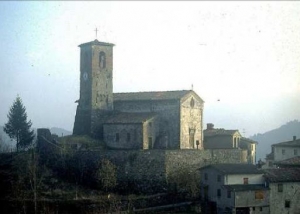
Information
Foundation:
XII century
District/Location:
Fosciandora, Ceserana
District:
Garfagnana


This church, documented since the 12th century, is located within a fortress with which it shares historical-artistic events. Although externally it maintains its original Romanesque characteristics, inside these have been cancelled by the alterations carried out over time. The church has two polychrome wooden statues, one linked to Pardini, the other to Piero d´Angelo, father of Jacopo della Quercia.
Fosciandora, Ceserana
In the middle ages the Ceserana area had a number of religious buildings, some of which are already documented in 1048 and 1085. Built within a fortress on top of a hill, the church of S. Andrea is recorded in 1168 in a Bull by Pope Alessandro III as dependent on the Parish Church of Fosciana. Repeatedly cited in 1244, 1260, 1303 and 1378, it appears to have undergone a period of decline in the early 15th century: in 1420 it results as joined to S. Martino di Palleroso, to overcome economic difficulty, and in 1421 to the church of Riana, though this in turn belonged to the Parish Church of Loppia. In 1467 it results as having its own christening font. In 1626, disagreements between the officiating clergy and the Este fortress governor, who impeded the use of the rectory, led the rector to transfer to the nearby church of Migliano, which acquired the title of Parish Church in 1661, while S. Andrea was classified as a co-parish church. In 1822, along with many other Garfagnana parishes, it passed to the diocese of Massa. Externally the building maintains its Romanesque appearance despite the repeated restoration works carried out over the centuries; in the 17th century the whole church structure was raised, traces of which are visible in the façade. The alterations are even more radical inside, where remains of the original structure have been lost; in the 17th century the lacunar ceiling was replaced by vaults and the walls received new altars. Near the high altar there are two polychrome wooden statues: the first of Sant´Andrea is widely attributed to Antonio Pardini, and the second, of San Giacomo, recalls the work of Piero d´Angelo.
Scopri altre attrazioni vicino a Saint Andrea di Corsena
See allYou may also like..
See allFind more
0











